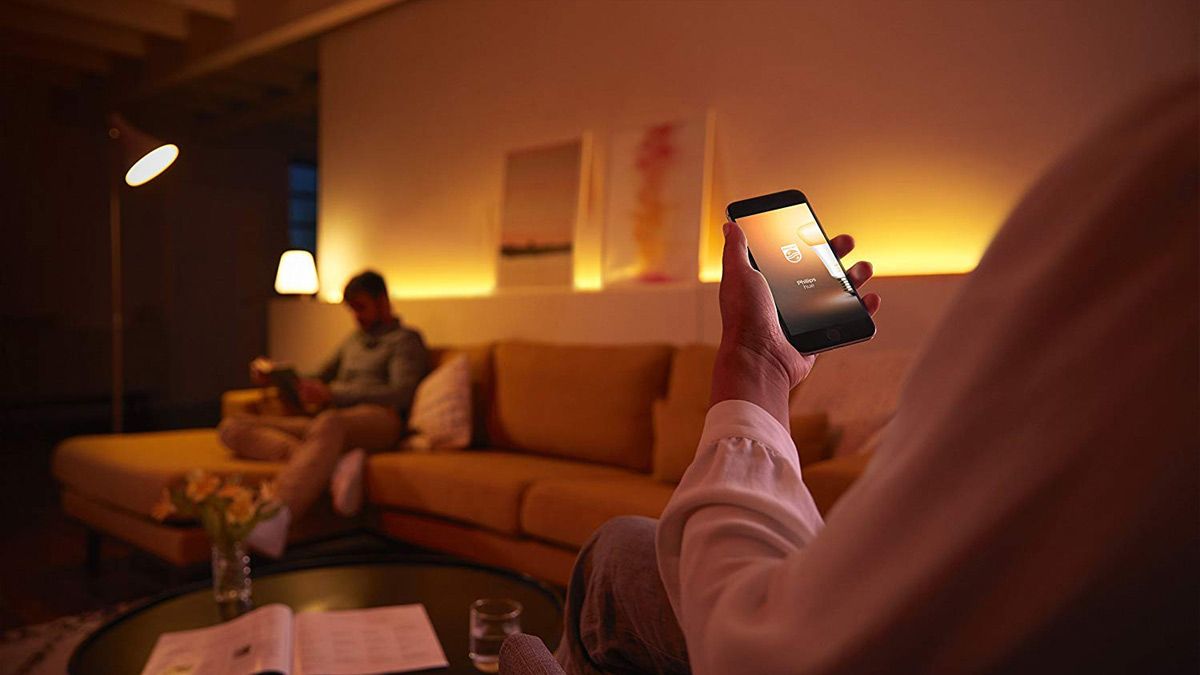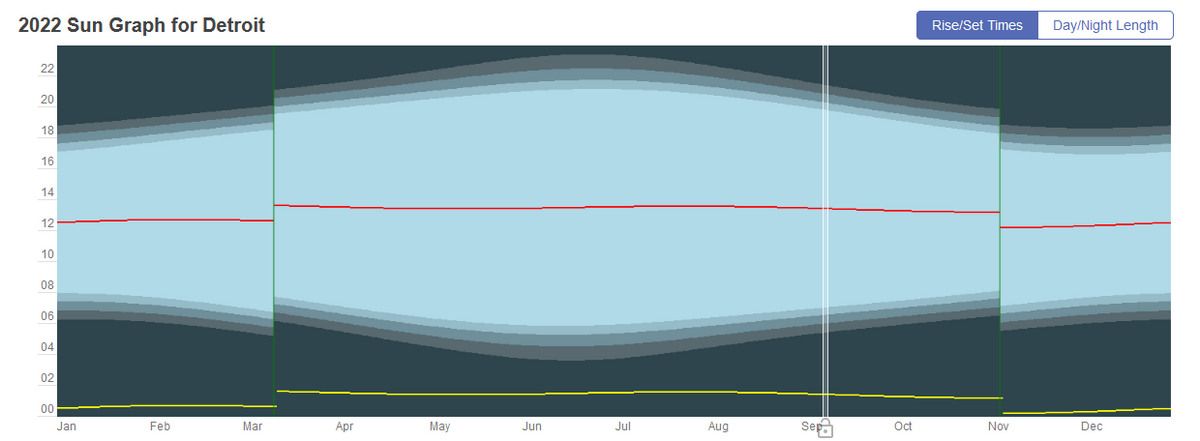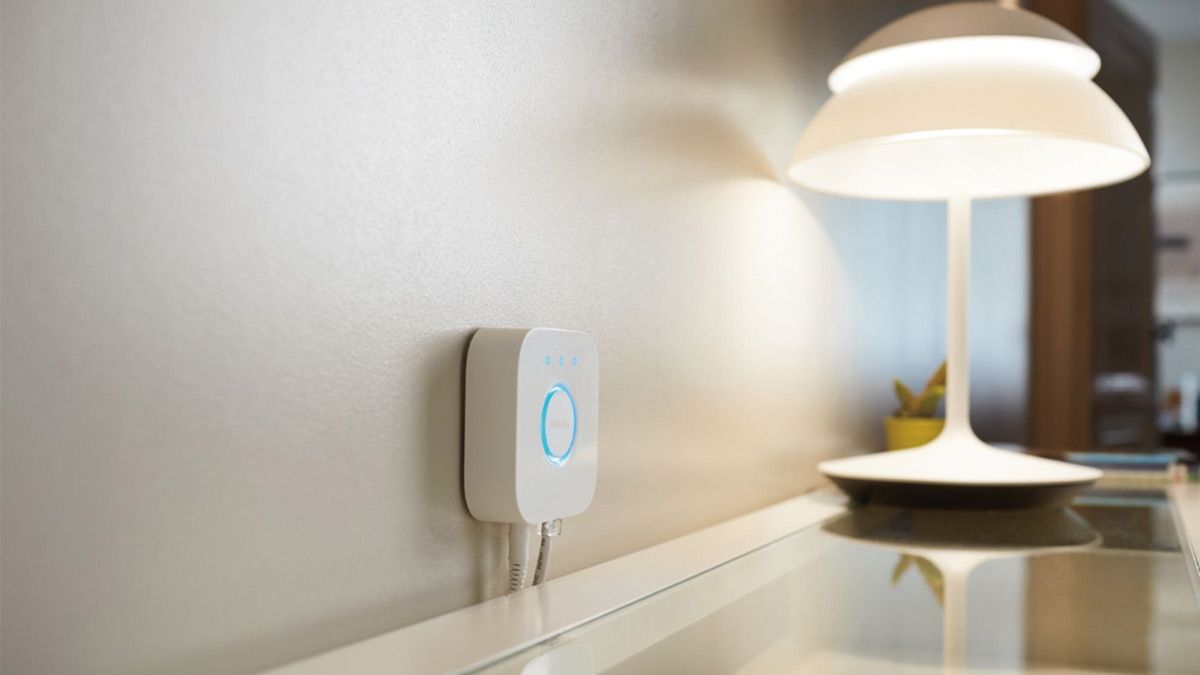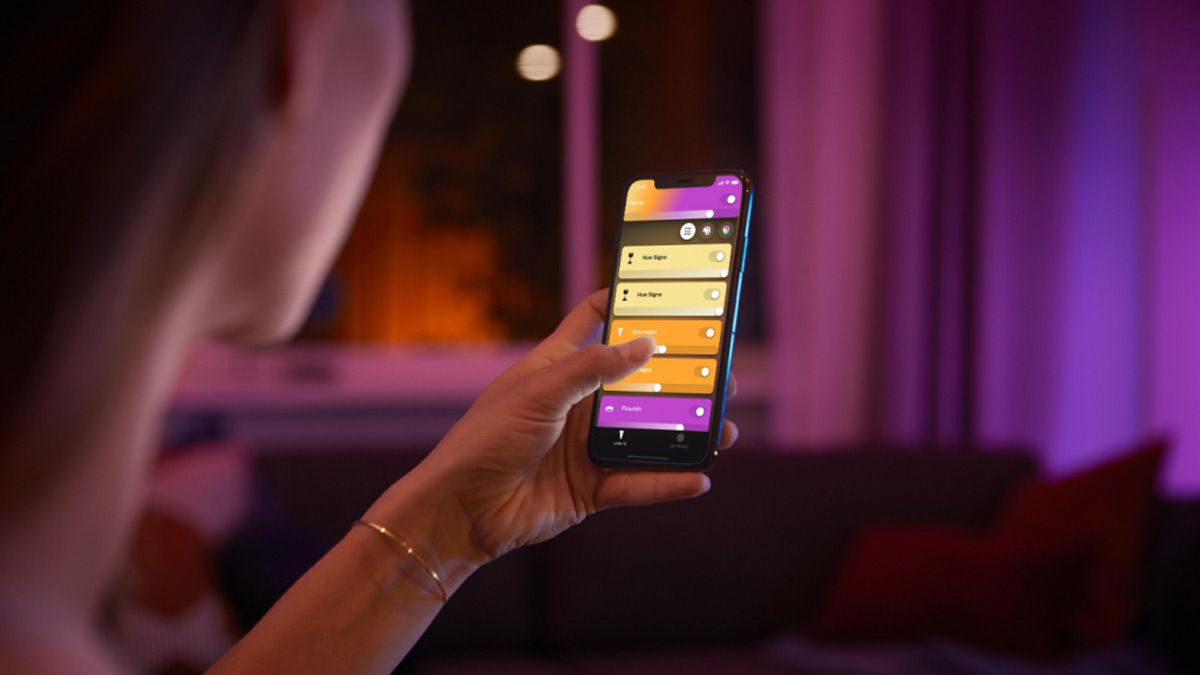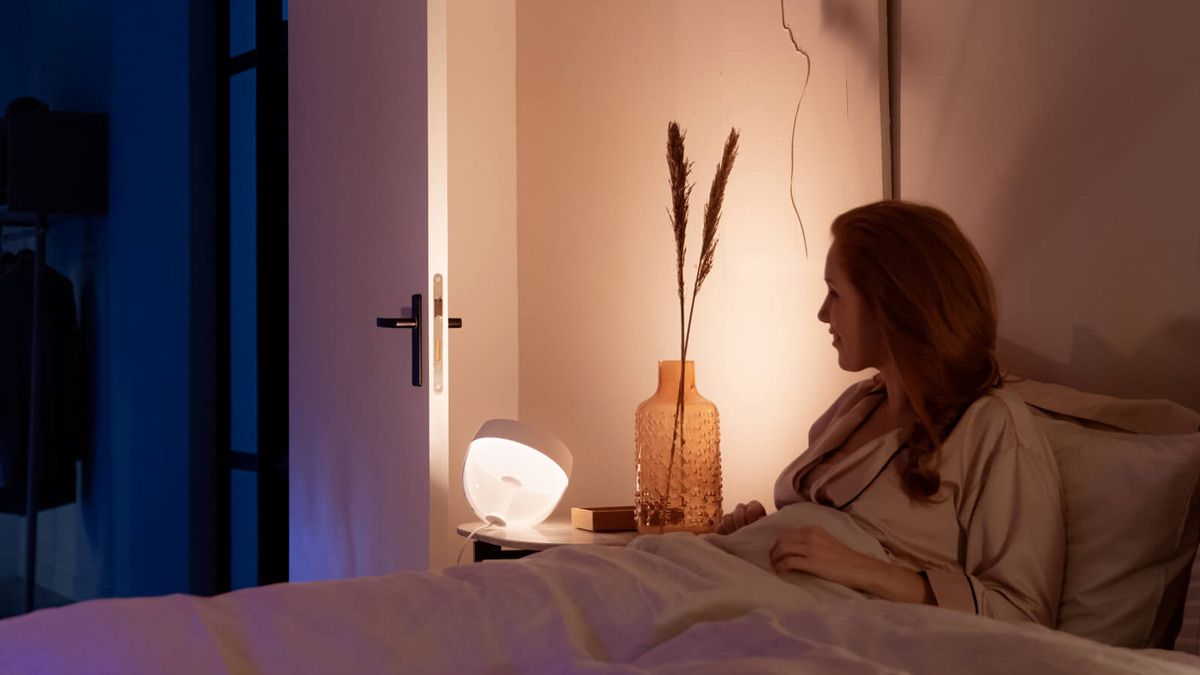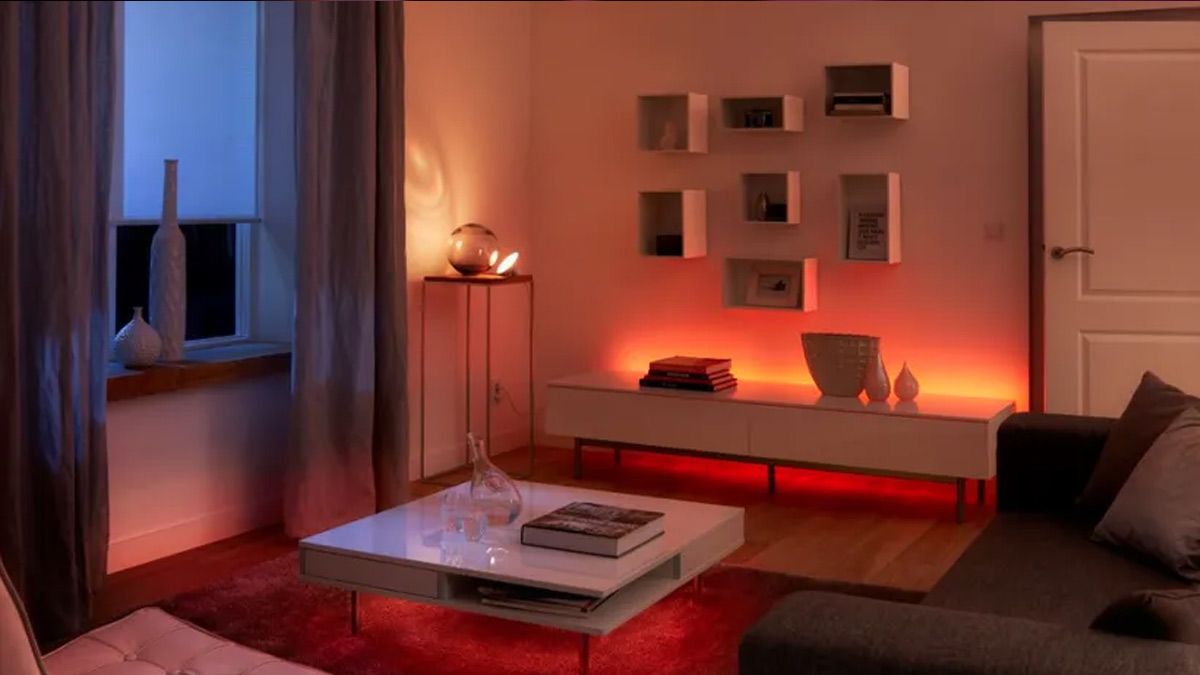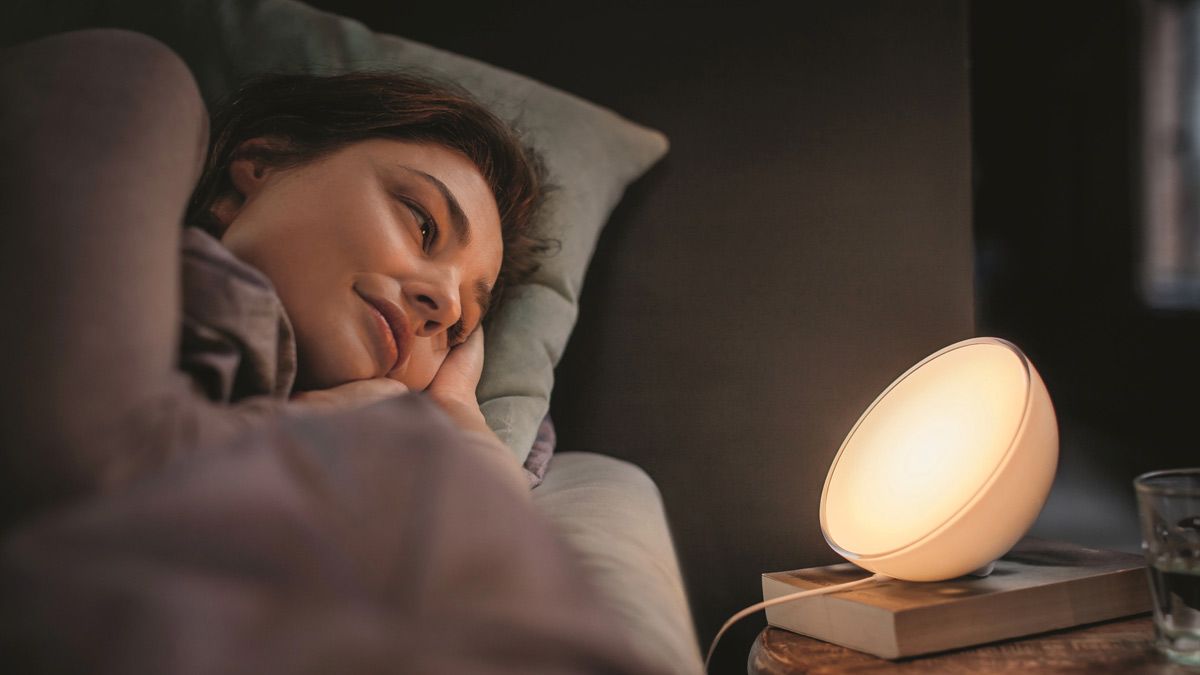Quick Links
For millions of people who live where winter means short days and long nights, smart lights are one of the easiest ways to make winter more bearable.
Who Should Set Up Smart Lights for Winter?
Not everybody lives in a place where winter brings a feeling of never-ending night, as if you're hibernating in a cave.
If you're reading this from somewhere on or very near the equator, consider yourself blessed in the circadian rhythm department. Equatorial countries like Ecuador, Columbia, and Indonesia have stable days with very little variation between summer and winter day length.
But the further you get from the equator, especially when you get beyond the Tropic of Cancer (the northernmost boundary the sun can hit the earth at a 90° angle) and the Tropic of Capricorn (the southernmost equivalent), the variation in day length over the year becomes more pronounced the further you go.
The variation of the length of the day in Bogota, for example, wavers back and forth just around a half hour over the entire year. But the further you head away from the equator, the bigger the variance gets.
When you reach places like Detroit or Toronto, however, the variation between winter and summer days is around six and a half hours. Offsets for Daylight Saving Time can make the change feel even more pronounced.
And at the most extremes near the poles, in places like Utqiaġvik, Alaska, the variance is so wide they have periods where the sun never even rises or stays in the sky for almost the whole summer.
So if you live somewhere where you can't rely on the sun to serve as a consistent metronome for your circadian rhythm, you're a prime candidate to use smart lights to help keep your body on a consistent and healthy schedule. Smart lights make getting up in the morning more pleasant, surviving the dark evenings more bearable, and falling asleep easier.
As a long-time resident of a place with pitch black winters, I've done this for years and can heartily recommend it to anyone who lives in a place with irregular days.
If you're curious, by the way, where your home falls on the range between even-keel equatorial sunshine and polar extremes, pop over to timeanddate.com's sun tracker and plug in your town or the nearest large city.
Which Smart Lights Should I Use?
There is always a bare-bones and budget-friendly way to approach every problem, but I would encourage you to spend a little bit more money on your smart light setup if your goal is not simply RGB-fueled parlor tricks but integrating your smart lights into your life as a health and wellness measure.
The more mature a smart light platform and the higher quality the bulbs, the more likely it is that you'll be able to recreate exactly the light temperature you want along with enjoying a host of software-based support for your project.
With that in mind, the gold standard for our purposes is the Philips Hue platform. Not only are the bulbs high quality, but there is a sophisticated ecosystem built up around the lights and a degree of extensibility through the Philips Hue Labs program that can't be beaten.
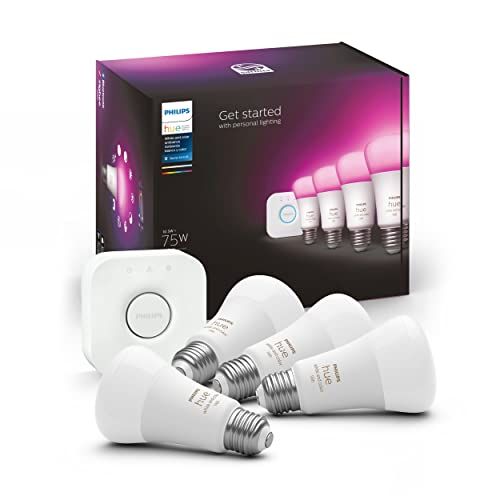
Philips Hue Starter Kit
Hue is the gold standard for smart bulb lighting for a reason, and a perfect fit for the rise and shine and then unwind and relax routines dark winter days call for.
Without a doubt, you can use other smart lights. You could recreate the various benefits of the Hue platform and plugins by writing your own scripts using your existing smart bulbs or plugs and the Home Assistant platform.
At the simplest, you could even buy a basic light timer and manually set up a light to flip on in the morning. In fact, long before smart lights were a common consumer product, I had a niche product called Lighten Up! from Wind Hover Manufacturing that offered programmable sunrise simulation using regular lights.
But our goal here is to use a tool that requires as little manual interaction, patching things together, or outright scripting solutions, as possible so anybody can get up and running almost instantly.
In the next section, we'll highlight ways to leverage smart lighting to make winter days more bearable with an emphasis on using the Hue platform. Feel free to take the general ideas and adapt them to whatever platform you have, though, even if that requires a more hands-on approach.
What Smart Routines Should I Consider?
What makes smart lights shine over a simple bulb and timer setup is the adaptability and the automatic changes. The following are my favorite routines and suggestions, sorted roughly in order of overall impact on quality of life and well-being.
The degree to which these various routines will prove useful to you hinges a lot on how big your home is and how many bulbs you have.
A simple 4-bulb Hue starter kit is sufficient for a studio apartment or to use in just your bedroom and perhaps another small room, but extending some of the more advanced routines to cover your whole home (or just your most used living areas) will require a bit more of an investment in bulbs.
Sunrise Simulation
By far the most usual application of smart lights, and one of the original reasons I dove into smart lighting back in the day, is sunrise simulation.
In the depth of winter, when the sun rises two hours later than it does in the winter, the ability to conjure sunrise on demand is pretty powerful.
One of the best ways to approach the sunrise situation is to pick the earliest sunrise time that feels most comfortable to you. If the peak July sunrise window in your locale of 5:55 AM is a bit too farmer-ish for your lifestyle, feel free to nudge it up a bit.
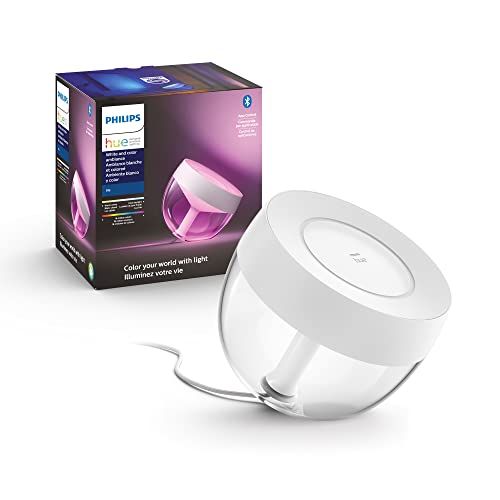
Philips Hue Iris
The Iris makes for both a fun accent lamp and a great addition to your sunrise/sunset routine.
You should make it a goal to pick a decently early time, however, and set that for the year. If the earliest daylight of the year is before 6 AM in the summer and after 8 AM in the winter, it's reasonable to set your lights to mimic sunrise at 6 AM or push it a little later and have it mimic sunrise at 7 AM. If you prefer a rise-and-shine time that's after the earliest natural sunrise in your locale, I can't say enough good things about investing in a quality set of blackout drapes.
Whatever time you settle on, the key is consistency. We're pushing back against the variability and striving to keep our rise time (and early morning light exposure) consistent. By using the "Wake Up" routine in the Hue app, you can set the lights to not only turn on at a specific time but to gradually brighten like an actual sunrise---and then keep that time locked in all year long.
Evening Lighting
I was an early adopter of the whole sunrise alarm thing. But, one smart lighting trick I took way too long, in my opinion, to take advantage of, however, was using smart lights not just to make dark winter mornings bearable but to make dark winter evenings bearable too.
If you live somewhere that it gets dark around dinner time in the winter, you know all too well how life goes from sunny to pitch black in a startingly fast fashion. So why not have some or all of your lights turn on at dusk to combat that gloominess?
Last winter, I set up routines for most of my smart bulbs---and at least accent lights in each room--to turn on at dusk around the house. Instead of rooms looking like empty dark caverns, the bulbs create a warmth that makes the entire home more inviting.
There are a myriad of ways to configure your smart bulbs to accomplish that end. You can simply set them to turn on a time around dusk, say 5:00 PM, during the winter months. Or you could time it a bit more precisely like I did, by using custom automation that fades the lights in for 30 minutes before dusk. No special Hue Labs addon is required; that functionality is built right in.
If you want an even fancier approach to this that you can extend to not just evening routines but also morning routines (because dark winter evenings are paired with dark winter mornings), check out the "Conditional Schedules" add-on in Hue Labs. You can tell the add-on when you want light in your home, and if it is dark at that time based on local conditions, then it will turn the lights on for you.
Now you might be thinking, "Isn't that an expensive waste of electricity?" Most of us were likely chided for leaving lights on when we were children, but LEDs have, frankly, made "wasting" power a minor consideration. A Hue smart bulb at 100% brightness consumes around 8 watts, and at 50%, it consumes around 3 watts.
That means every smart bulb you turn on in the evening for, say, 6 hours, uses around 17 cents (at the US average kWh cost of 12 cents) per month at 100% brightness. If you had *twenty* bulbs, it would only add $3.46 cents to your monthly power bill---so less than $20 to get you through the dark days of winter.
Considering all the things most of us spend money on to make winter a bit more cheerful, that's a bargain.
Bedtime Routines
Bedtime routines are trickier than morning routines and turning the lights on around dinner time. While some of you might have very consistent bedtime schedules (and good for you, it's an excellent and circadian-rhythm-friendly practice), for most folks, bedtime is a bit variable. Mixing roommates, a significant other, or kids into things can complicate the situation, too.
If you do have a routine bedtime, it's pretty simple to set your bedroom (or even your whole home to use a warm white or "candlelight" scene in the evening and then dim down at the time you've scheduled your bedtime. If you want to be in bed by 10:00 PM every night, you can set the bulbs to all begin dimming, say, 30 minutes in advance to encourage yourself to wind down.
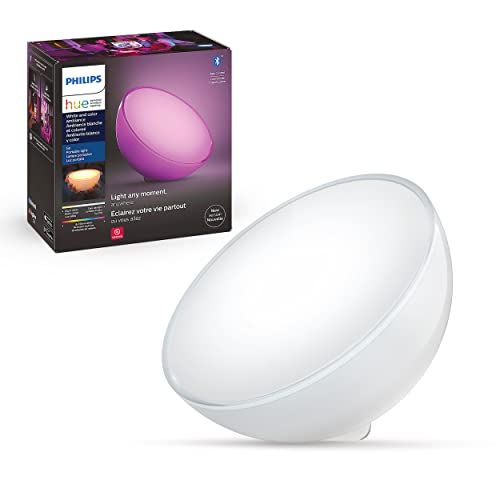
Philips Hue Go
The Go is like the Iris, but with a battery so you can easily move it. Perfect to use as sunrise alarm and ambient mood lighting during the evening.
If your bedtime is more variable, you can still do the same thing, but you'll need to take advantage of routines---like the "Personal Go to Sleep" add-on--- you can manually trigger in the Hue app (or your smart platform of choice) or that you can easily trigger with a smart home routine through your Alexa or your Google Assistant, or a sleep app that supports smart light integration. If you're using Google Assistant, you can take advantage of the Gentle Sleep function to set dimming routines on the fly.
If you want a really soothing bedtime routine that works both manually, on a schedule, and integrates with smart home assistants, the "Sunset Simulation" add-on in Hue Labs is a fun one. Why limit yourself to just dimming the lights when you can get a sunset experience?
In the end, if you do nothing else with the knowledge you've gained here, I'd strongly encourage you to at least set up a morning smart routine. Nothing has made as much of an impact on my life in a dark and gloomy winter wonderland as much as the ability to keep sunrise consistent all year long has. Smart lights are a must-have smart home accessory, even if that's all you ever do with them.

